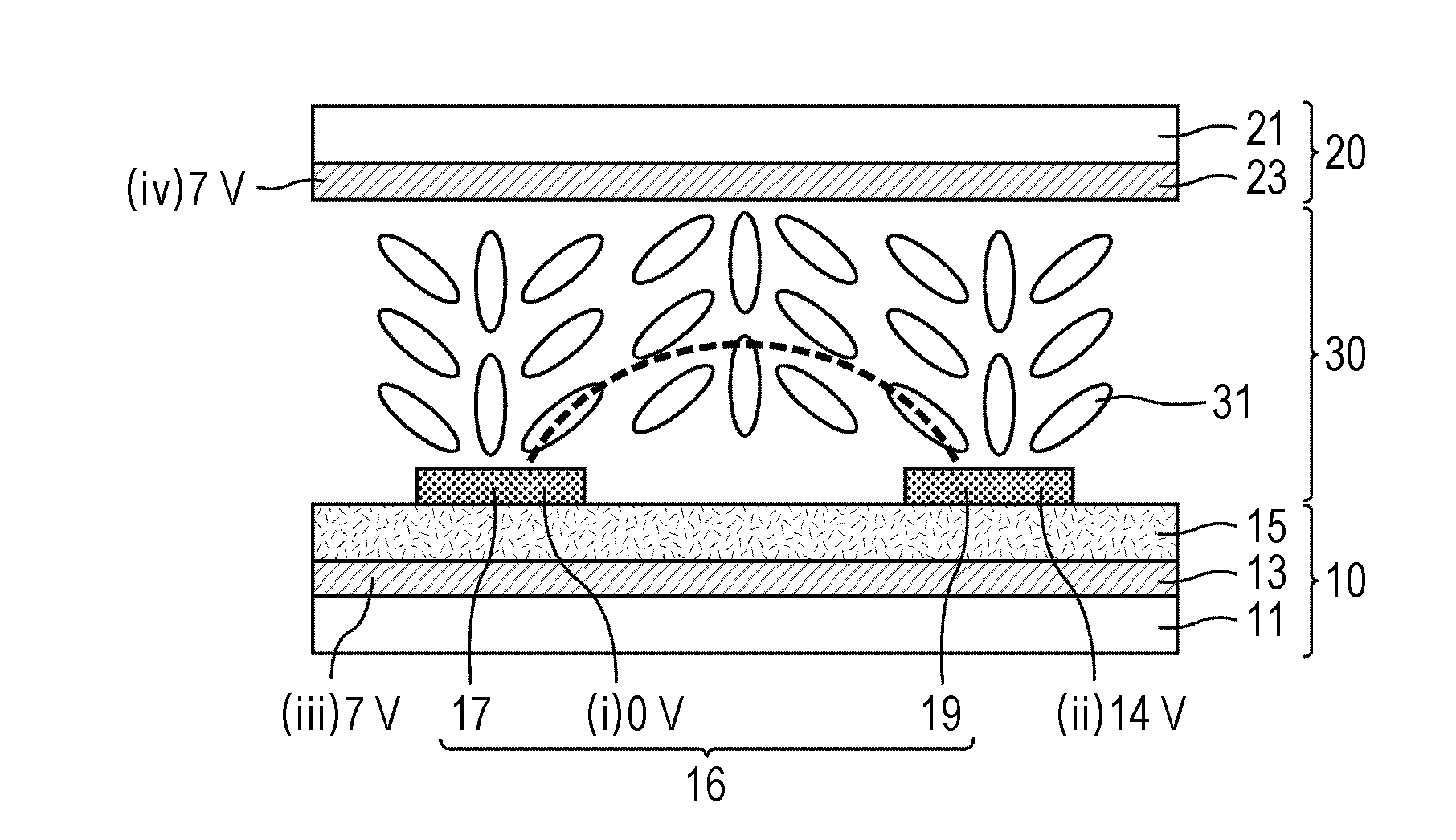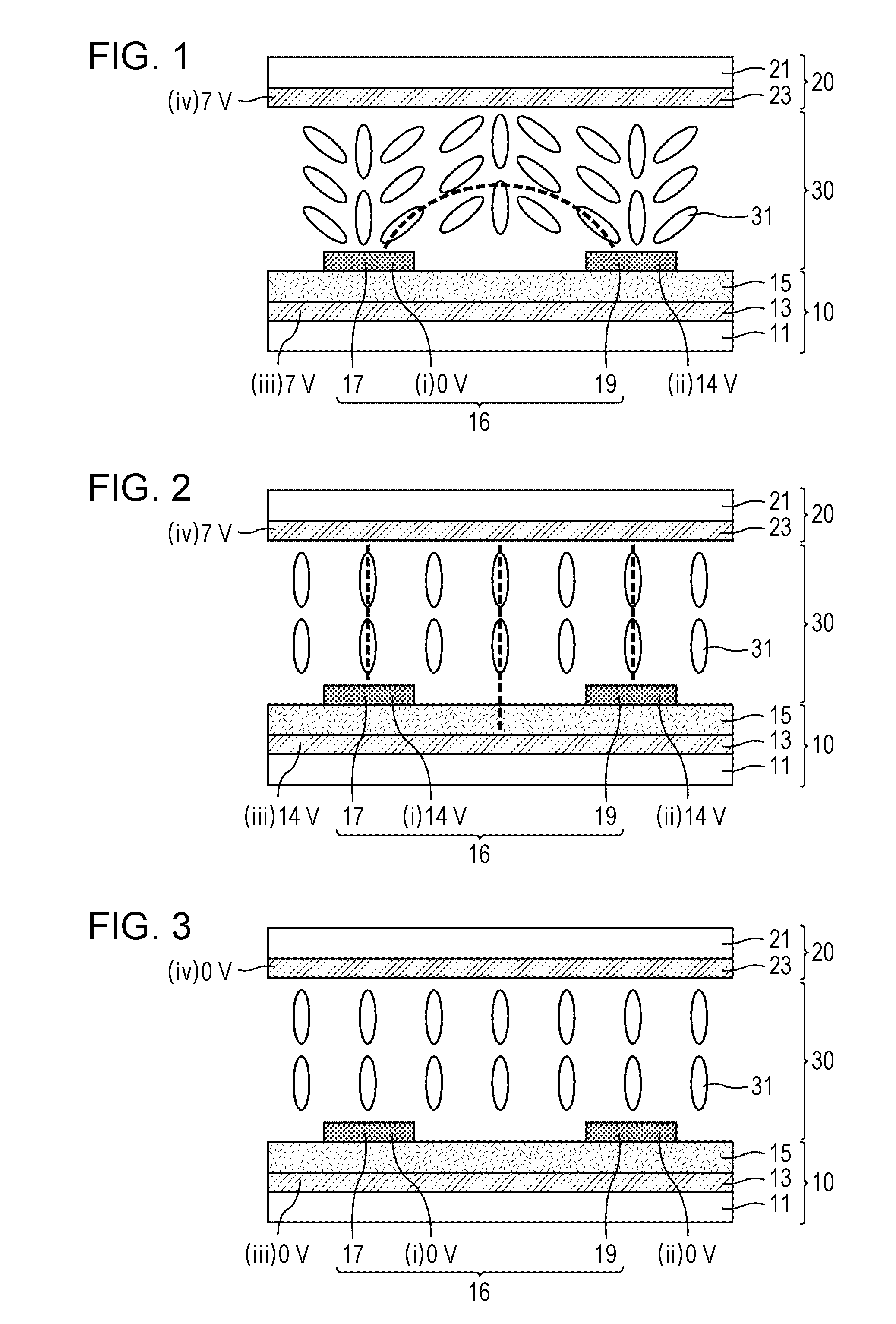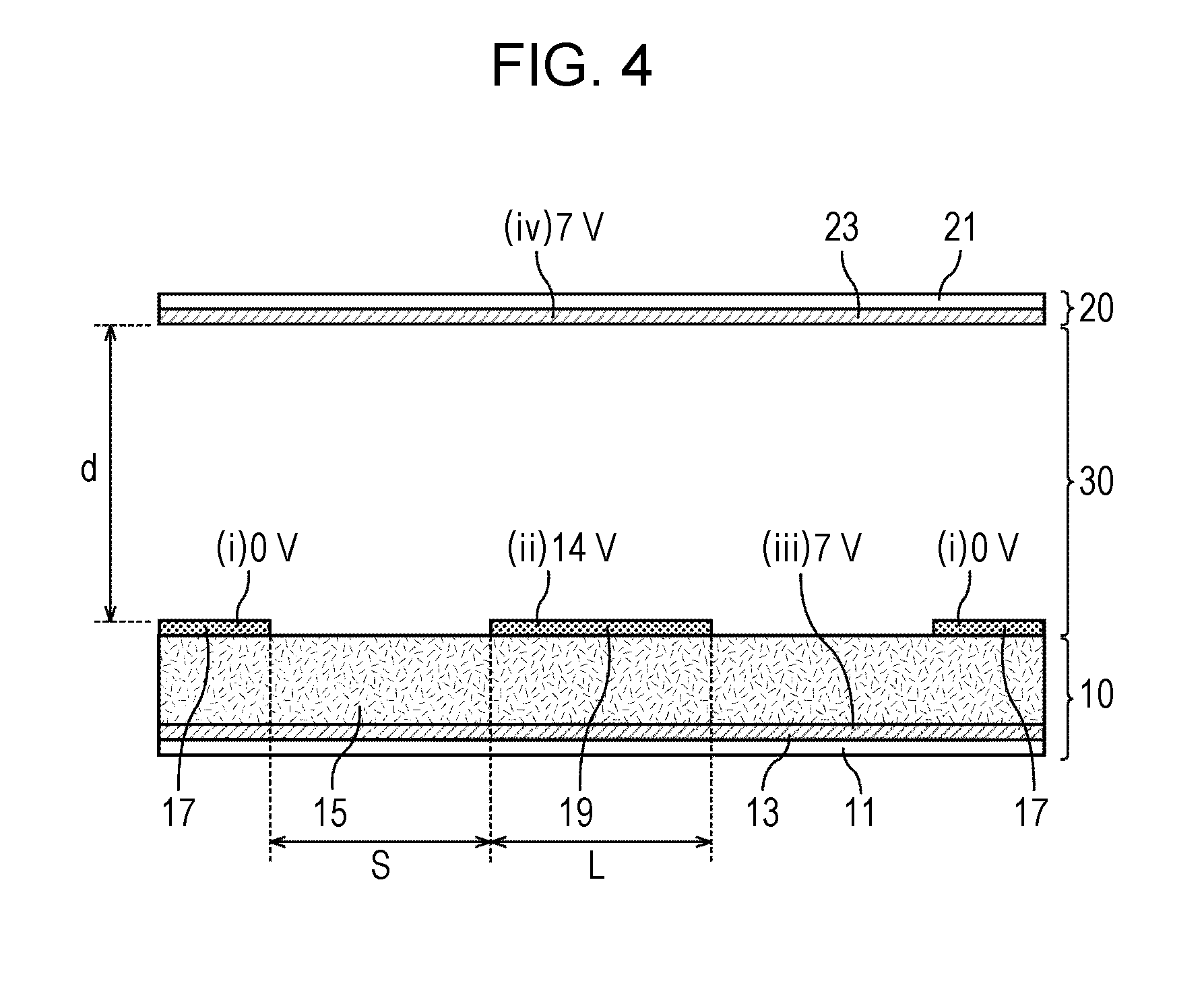Liquid crystal drive method and liquid crystal display device
a driving method and liquid crystal technology, applied in static indicating devices, instruments, non-linear optics, etc., can solve problems such as insufficient transmittance, and achieve the effects of reducing transmittance, high transmittance, and fast respons
- Summary
- Abstract
- Description
- Claims
- Application Information
AI Technical Summary
Benefits of technology
Problems solved by technology
Method used
Image
Examples
first preferred embodiment
[0158]FIG. 1 is a schematic sectional view of a liquid crystal display panel of a first preferred embodiment of the present invention during the generation of an in-plane electric field. FIG. 2 is a schematic sectional view of the liquid crystal display panel of the first preferred embodiment during the generation of a vertical electric field. As illustrated in FIG. 1 and FIG. 2, a broken line indicates the direction of a generated electric field. The liquid crystal display panel of the first preferred embodiment preferably includes a vertically aligned three-layer electrode structure including liquid crystal molecules 31 as a positive-type liquid crystal (an upper layer electrode corresponding to a second layer on the lower substrate is a comb electrode). During the rise time, the in-plane electric field generated by a potential difference of about 14 V between a pair of comb electrodes 16 (preferably a comb electrode 17 having a potential of about 0 V and a comb electrode 19 havin...
second preferred embodiment
[0185]FIG. 24 is a schematic sectional view of the liquid crystal display panel of a second preferred embodiment of the present invention. FIG. 25 is a plan view of a picture element in the liquid crystal display panel of the second preferred embodiment. FIG. 26 is an equivalent circuit diagram of the picture element in the liquid crystal display panel of the second preferred embodiment. FIG. 27 illustrates a potential change of each electrode in the liquid crystal display panel of the second preferred embodiment. In the driving method of each module of the first preferred embodiment, one TFT is driven on a per picture element basis. As illustrated in FIG. 24 through FIG. 27, a chain line with two dots denotes a wiring electrically connected to a lower layer electrode on the lower substrate. A chain line with one dot denotes a wiring electrically connected to one comb electrode of the pair of comb electrodes on the lower substrate. A wiring electrically connected to the other comb e...
third preferred embodiment
[0192]FIG. 46 is a schematic sectional view of the liquid crystal display panel of a third preferred embodiment of the present invention. FIG. 47 is a plan view of a picture element in the liquid crystal display panel of the third preferred embodiment. FIG. 48 is an equivalent circuit diagram of the picture element in the liquid crystal display panel of the third preferred embodiment. FIG. 49 illustrates a potential change of each electrode in the liquid crystal display panel of the third preferred embodiment. In the driving method of each module of the third preferred embodiment, one TFT is driven on a per picture element basis. As illustrated in FIG. 46 through FIG. 49, a chain line with two dots denotes a wiring electrically connected to a lower layer electrode on the lower substrate. A chain line with one dot denotes a wiring electrically connected to one comb electrode of the pair of comb electrodes on the lower substrate. A wiring electrically connected to the other comb elect...
PUM
 Login to View More
Login to View More Abstract
Description
Claims
Application Information
 Login to View More
Login to View More - R&D
- Intellectual Property
- Life Sciences
- Materials
- Tech Scout
- Unparalleled Data Quality
- Higher Quality Content
- 60% Fewer Hallucinations
Browse by: Latest US Patents, China's latest patents, Technical Efficacy Thesaurus, Application Domain, Technology Topic, Popular Technical Reports.
© 2025 PatSnap. All rights reserved.Legal|Privacy policy|Modern Slavery Act Transparency Statement|Sitemap|About US| Contact US: help@patsnap.com



